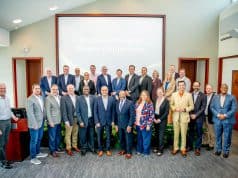Organizations trying to weather an increasingly multilayered and erratic environment must first evaluate how they manage and distribute information to promote collective intelligence.
“Knowledge is the capacity to take effective action,” says David Bennet, co-founder of the Mountain Quest Institute, a research and learning center in Frost, WV. “It is a critical part in dealing with uncertainty and complexity. You can share knowledge, you can leverage it, you can sculpt it, and you can apply it. Knowledge changes over time.”
Speaking at the recent Knowledge Futures: The Agility Imperative symposium held at Goizueta Business School, Bennet joined executives from IBM and the Centers for Disease Control and Prevention (CDC) to discuss “The Future of the Organization” in a panel moderated by Benn Konsynski, George S. Craft Professor of Information Systems & Operations Management.
Time-strapped managers can improve productivity and responsiveness through knowledge sharing, intuitive reasoning, and the application of diverse skills, Bennet explains.
Other panelists advocated for bottom-up agility, particularly when projects span multiple time zones. Uniform project delivery standards for global partners, for instance, must be tweaked to reflect cultural conditions on the ground, explains Steve DelGrosso, director of the Project Management Center of Excellence at IBM Global Business Services.
“Our biggest target for agility is how we apply resources within IBM,” he says.
Mark White, deputy director of the CDC’s Division of Public Health Capacity Development, says the CDC has gained valuable public health information by partnering with local ministries of health in training and data collection methods.
“One of the core issues from an agility standpoint is, how do I amplify a weak signal as quickly as possible and decide an effective pattern of response to a problem?” notes Konsynski. “It extends to the extra-organizational level. The tools for sensing and responding are not always owned or controlled by the organization.”
To view the video of the discussion, click here.








